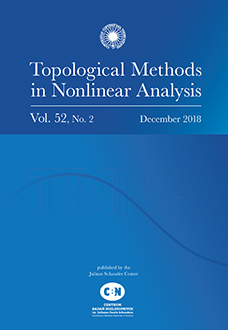Abstract
In this paper we study the following class of nonlocal problem involving Caffarelli-Kohn-Nirenberg type critical growth $$ L(u)-\lambda h(x)|x|^{-2(1+a)}u=\mu f(x)|u|^{q-2}u+|x|^{-pb}|u|^{p-2}u\quad \text{in } \mathbb R^N, $$ where $h(x)\geq 0$, $f(x)$ is a continuous function which may change sign, $\lambda, \mu$ are positive real parameters and $1< q< 2< 4< p=2N/[N+2(b-a)-2]$, $0\leq a< b< a+1< N/2$, $N\geq 3$. Here $$ L(u)=-M\left(\int_{\mathbb R^N} |x|^{-2a}|\nabla u|^2dx\right)\mathrm {div} \big(|x|^{-2a}\nabla u\big) $$ and the function $M\colon \mathbb R^+_0\to\mathbb R^+_0$ is exactly the Kirchhoff model, given by $M(t)=\alpha+\beta t$, $\alpha, \beta> 0$. The above problem has a double lack of compactness, firstly because of the non-compactness of Caffarelli-Kohn-Nirenberg embedding and secondly due to the non-compactness of the inclusion map $$u\mapsto \int_{\mathbb R^N}h(x)|x|^{-2(a+1)}|u|^2dx,$$ as the domain of the problem in consideration is unbounded. Deriving these crucial compactness results combined with constrained minimization argument based on Nehari manifold technique, we prove the existence of at least two positive solutions for suitable choices of parameters $\lambda$ and $\mu$.
Citation
David G. Costa. João Marcos do Ó. Pawan K. Mishra. "The Nehari manifold for indefinite Kirchhoff problem with Caffarelli-Kohn-Nirenberg type critical growth." Topol. Methods Nonlinear Anal. 58 (1) 105 - 134, 2021. https://doi.org/10.12775/TMNA.2020.064
Information





